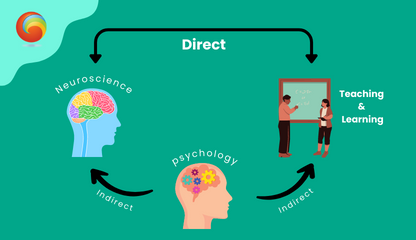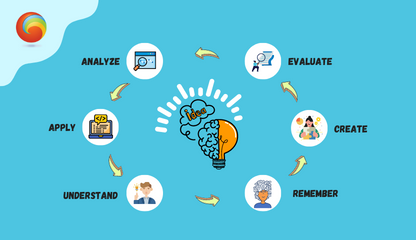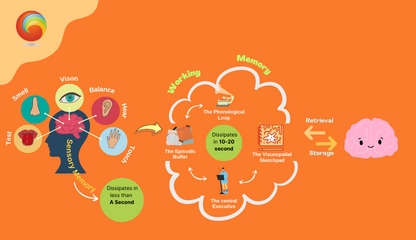How Do You Create Talent With Activated Knowledge?
Unleashing the Power of Talent with Activated Knowledge | Talent Creation | Building High-Performing Culture

What Is Talent?
Talent is frequently thought of as an innate aptitude or skill that distinguishes one person from another. It might appear in a variety of ways, such as outstanding intellectual ability, physical skill, or artistic originality.
Talent on its own, however, falls short of realizing its full potential. When Talent is combined with Activated knowledge, it becomes a force that can drive extraordinary achievements and transformative outcomes.
What Is Activated Knowledge?
While talent provides a head start, it is the acquisition and application of knowledge that propel it forward. Activated knowledge refers to the conscious and deliberate utilization of information, skills, and expertise to enhance one’s natural abilities. It involves continuously expanding one’s understanding, refining techniques, and developing a deep mastery of the chosen field.
Why Do We Need Talent With Activated Knowledge?
In today’s rapidly evolving world, organizations face the challenge of nurturing talent and building a high-performing culture to stay competitive.
While talent acquisition is crucial, it is equally important to activate that talent through activated knowledge and create an environment that fosters a growth mindset and builds neural pathways.
Talent with activated knowledge is crucial for maximizing potential, adapting to change, driving innovation, enhancing problem-solving capabilities, nurturing leadership potential, and fostering resilience. By combining innate talent with an active pursuit of knowledge, individuals can unlock their full potential and make meaningful contributions to their personal and professional lives.
How Swabhav Creates Talent With Activated Knowledge?
At Swabhav, we like to think of ourselves as the mad scientists of the talent creation journey! We don’t claim that our talent creation journey is an original creation. Instead, we embrace our role as a laboratory, where we gleefully mix and match the best ingredients from a range of sources.
At Swabhav, we believe that every student’s learning journey is unique and holds the potential for greatness. Our approach is centered around creating an environment that fosters growth, curiosity, and resilience.
At the core of our philosophy is the belief in activated knowledge that directly influences real-world outcomes. Inspired by the famous motto “Men et Manus” from MIT, which translates to “Mind and Hand”, we understand the importance of combining theoretical knowledge with practical application.
In this blog, we’ll explore the key steps of the talent creation journey at Swabhav and how we leverage parental influence, peer pressure, career aspirations, curiosity, surprise, and positive error feedback to unlock their full potential.
Step 1: The Power of Parents, Peers, and Aspirations
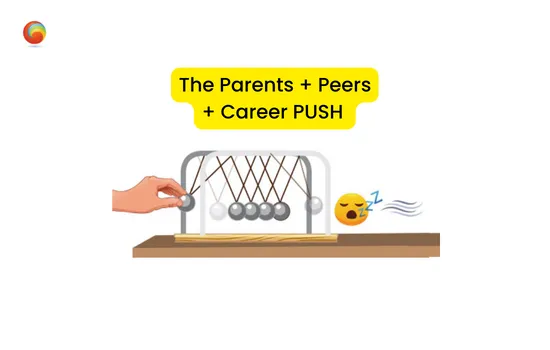
A student’s learning journey often begins with the influential factors of parents, peers, and career aspirations. We engage with students & parents to understand their aspirations and ensure alignment with our educational approach. Likewise, we foster a supportive peer environment that encourages healthy competition, collaboration, and mutual growth.
Step 2: Fostering Curiosity, Surprise, and Positive Error Feedback

Once talent enrolls, we embark on a mission to create a psychologically safe space where they can freely explore their curiosity. We know that curiosity is the fuel that drives learning and innovation. Through thoughtfully designed programs and projects, we stimulate students’ curiosity and surprise them with exciting challenges and opportunities.
One of the cornerstones of our approach is providing positive error feedback. We understand that making mistakes is an integral part of the learning process. By reframing mistakes as valuable learning experiences, we empower talents to take risks, learn from failures, and grow into resilient problem-solvers. Our teachers and mentors provide constructive feedback that encourages students to iterate, refine, and continuously improve their skills.
Step 3: Amplifying Learning with Neurobiological Drivers
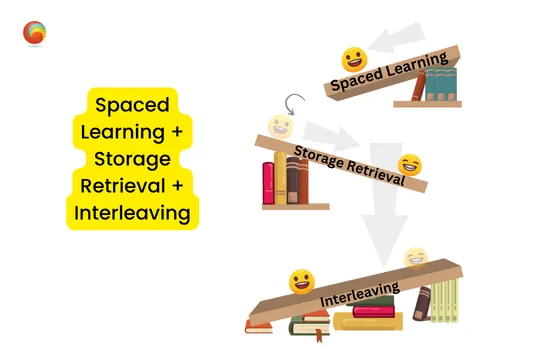
As students progress on their learning journey, they enter a phase of accelerated growth, fueled by neurobiological drivers that optimize learning. These drivers, which include spaced learning, storage retrieval, and interleaving, are carefully integrated into our approach to enhance retention, understanding, and application of knowledge.
Step 4: Concept Clarity and Syntax Learning Made Easy

In the final steps of the talent creation journey, we prioritize two crucial aspects: concept clarity and syntax learning. Through our innovative teaching methods, we make these steps as easy as a hop, skip, and jump!
Step 5: Real-World Success
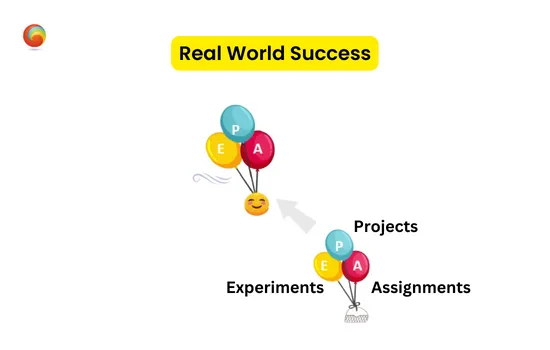
We believe in an immersive and dynamic learning experience that propels talent’s growth and development. With projects, experiments, and assignments as essential pillars of our approach, we enable students to elevate their learning to new heights. By engaging in hands-on projects, conducting experiments, and completing assignments, students refine their skills, cultivate a deeper understanding, and gain the confidence to tackle real-world challenges.
With this comprehensive knowledge and skill set, students are well-prepared to succeed in the real world. They possess the ability to think critically, solve complex problems, communicate effectively, and adapt to the ever-changing demands of their chosen field. Equipped with neurobiological drivers, concept clarity, and syntax learning, our talents are ready to make a meaningful impact in their future endeavors.
How Swabhav Fills The Tech Talent Gap In The Industry?
In today’s world, where the demand for talent exceeds the available supply, organizations often face the challenge of filling the tech talent gap. To address this issue, three approaches come to the forefront: talent creation, upskilling existing talent, or outsourcing talent.
To effectively fill the talent gap, organizations can adopt a combination of these approaches based on their unique needs and circumstances. It’s essential to strike a balance between talent creation, upskilling existing talent, and leveraging external resources when necessary.
At TSM (Talent Scouting and Mentoring), we believe in a comprehensive approach to tech talent solutions. Our methodology encompasses scouting for potential talent, mentoring individuals to unlock their full potential, and designing session plans that facilitate deep practice and continuous improvement. We emphasize constant ignition to keep the flame of passion burning within individuals, while our master coaching ensures that talent is honed and guided toward excellence.
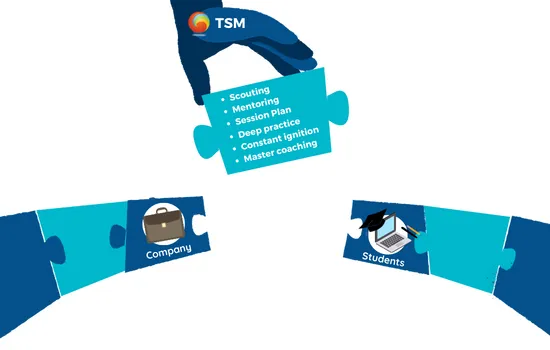
By strategically combining these elements, organizations can bridge the talent gap, cultivate a high-performing workforce, and drive sustainable growth.
Together, let’s bridge the tech talent gap and unlock the full potential of individuals and organizations alike!
Frequently Asked Questions
- What is the best way to develop talent?
-
The best way to develop talent is by combining innate abilities with a deliberate pursuit of knowledge and continuous learning. It involves creating an environment that fosters growth, curiosity, and resilience. Providing opportunities for hands-on projects, experiments, and assignments, as well as offering constructive feedback and positive error feedback, can also contribute to talent development.
-
- What is talent activation?
-
Talent activation refers to the process of harnessing and maximizing the potential of individuals’ innate abilities and skills through the acquisition and application of knowledge. It involves consciously and deliberately utilizing information, expertise, and skills to enhance one’s natural talents, leading to extraordinary achievements and transformative outcomes.
-
- How do you create a talent function?
- Creating a talent function involves several steps,
including:
- Identifying the organization’s talent needs and aligning them with its strategic objectives.
- Developing a talent acquisition strategy to attract and recruit individuals with the desired skills and potential.
- Implementing talent creation programs and initiatives to nurture and enhance the skills and abilities of existing employees.
- Creating a culture of continuous learning and growth that encourages employees to actively seek knowledge and improve their skills.
- Establishing performance management systems that recognize and reward exceptional talent and provide opportunities for career advancement.
- Creating a talent function involves several steps,
including:
- What are the 5 key areas of talent development?
- Continuous Learning: Encouraging individuals to engage in lifelong learning and providing opportunities for acquiring new knowledge and skills.
- Skill Enhancement: Focusing on developing specific skills relevant to the individual’s field or role through training, practice, and feedback.
- Leadership Development: Nurturing leadership qualities and empowering individuals to take on leadership roles and responsibilities.
- Adaptability and Resilience: Building the capacity to adapt to change, overcome challenges, and bounce back from setbacks.
- Performance Management: Implementing systems to assess and recognize talent, provide feedback, and create pathways for career progression.

